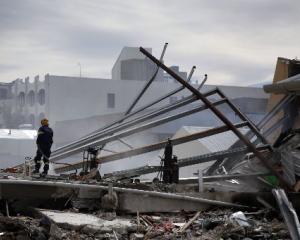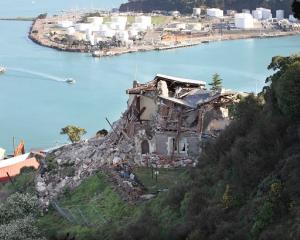Three years ago this week the first of the big Canterbury earthquakes occurred, the start of the life-changing events for the province and its people, and one of the biggest challenges to face New Zealand and its government in its history.
The September 4, 2010, earthquake and the February 22, 2011, earthquake, which killed 182 people, spawned a whole new vocabulary.
''Liquefaction'', ''munted'' and ''kia kaha'' became some of the most frequently used words early on, then, as thoughts turned to the future, the world ''rebuild'' became part of the national lexicon, even as many argued its use as a noun to describe the reconstruction of the city was incorrect.
But, three years on, there are many who would argue its use as a verb has been every bit as inaccurate, as progress on settling homeowners' claims, gaining consents, drafting designs, carrying out repairs or rebuilding homes from the ground up proceeds at a pace advocacy groups deem glacial.
A new report for the Insurance Council shows the industry is now dealing with 24,000 properties with earthquake damage costing more than $100,000. About 8200 of those claims have been resolved and 700 properties repaired or rebuilt. But the owners of 5000 severely damaged properties are still settling insurance claims and about 600 property owners have not received any insurance offers.
The Insurance Council argues the figures are reasonable given the number of claims, their technical nature, and aftershocks which have caused new damage.
Advocacy groups say there is huge dissatisfaction with the rate of progress.
No-one could dispute the fact the task facing the Government, Christchurch City Council, insurance companies and the construction sector is huge and, given the scale of the devastation, the tens of thousands of people affected and the logistics involved, it has often been a thankless one.
It is understandable the ''quicker-fix'' jobs have been prioritised when it comes to homes, and the design and construction aspects have taken longer given new building regulations following recommendations from last year's Royal Commission of Inquiry hearing into the Canterbury earthquakes and a review by the Ministry of Business, Innovation and Employment.
There has also been a huge amount of work done on the city's basic infrastructure - roading, water, sewerage and power.
The Government and Christchurch City Council have rightly pushed the Christchurch Central Recovery Plan in order to encourage investment, spur economic growth, and create a vibrant accessible city which retains its core values and takes the chance to incorporate new elements.
But claims continue that insurance companies are making substantial profits, that there has been no or poor communication from them and the Earthquake Commission, and that the Government is pushing for multimillion-dollar ''anchor projects'' in the new city blueprint which will be partially funded by ratepayers, some of whom are still living in garages, caravans or unsafe and unsanitary housing, some of whom are still waiting for their claims to be processed, and some of whom have given up out of frustration and are rebuilding their lives elsewhere.
The promises along the way have done little to reassure, as timelines have extended. The Insurance Council now says the bulk of the repair work and rebuilding should be done in 2014 and 2015, and all claims should be resolved by the end of 2016. The hearts of most New Zealanders would surely go out to those homeowners facing the prospect of not settling their claims until the end of 2016, almost six years after the quakes.
It is a long time to be stoic, a long time to feel scared, anxious, frustrated and alone, and a long time to wait until the promise of a bright future with the rebuild becomes a reality.
The vision for the gleaming new city, which supports ''business, cultural and social activities'' for ''all peoples and cultures'' according to the plan is something to hold on to, but in the meantime many lives remain on hold.







